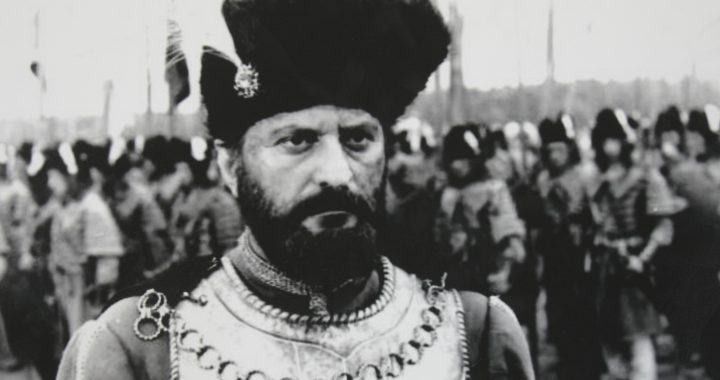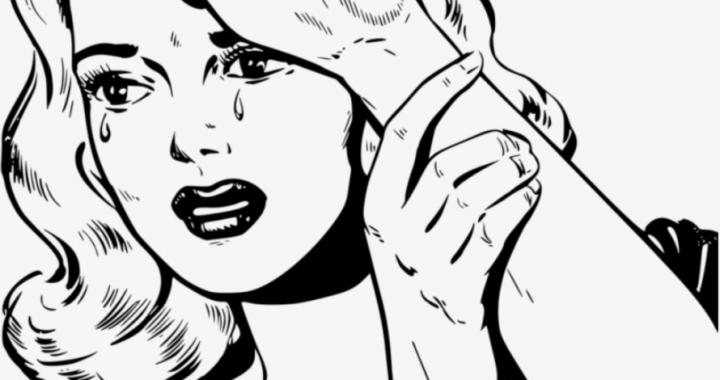It’s been a while! I was on an adventure with the Mrs. A get-away. A vacay. Anyway . . . I missed completing these exercises. A part of me is so ready to start writing Awake & Asleep, but I really want to get through my semester of plot. That way I can get to slashing pages with a finely sharped sword.
Today’s exercise asks us to look at some of our favorite stories in relation to a set of common plot patterns. The point of recognizing patterns, claims Mr Bell, is to give us plot ideas. More than that, however, patterns seem to determine the mood and genre of the story. While the biggest advantage to studying these patterns might be that they free the writer. As in, when we start by knowing what pattern to use, the rest of the writing becomes filling in interesting details. A bit like coloring in the lines, that childhood past time, which, when done well, always produces a pretty picture.
For this post I will name the pattern, quote Mr Bell’s description of it, next cite a favorite story, then describe its three acts. What I won’t write is why these structures are timeless. For that, you must read Plot & Structure yourself!
. . .
The Quest. The lead is someone who is incomplete in the ordinary world. The thing searched for must be of vital importance. There must be huge obstacles preventing the lead. The quest results in the lead becoming a different (usually better) person at the end, although it may end in tragedy.
Zen and the Art of Motorcycle Maintenance. Act I introduces us to an intelligent ex-professor, on a road trip with his son and two friends. There is an inner dissatisfaction which at first we believe is the result of his meandering vacation that has lasted too long. We enter Act II learning that the trip actually serves a tangible dual purpose. The father is at once trying to get away from a past trauma while also trying to understand what happened to him (Quest for truth). It turns out he had developed an alter-ego bent on self-destruction. The final Act is the confrontation with this inner force, its re-integration, and a “drive into the sunset” finale for our lead and his son.
Revenge. The lead should be sympathetic. The wrong done to the lead is usually not his fault; if it is, the wrong is out of proportion. The desire for revenge has an effect on the lead’s inner life.
Kill Bill: Vol 1, 2. In Act I we learn that the lead was a former assassin who left her old life behind when she became pregnant with her boss’s baby. Being a jealous man he kills her new lover and leaves the lead for dead, after gunning her down, which doesn’t kill her, only leaves her in a long coma. Act II follows the lead as she exacts revenge on the team that had tracked her down and nearly murdered her. For added tension she also believes her baby to be dead. After a round of mostly successful revenge kills, which end in the lead being buried alive, Act III begins with the lead clawing her way back above ground. She tracks down her ex boss, discovers their baby is alive, and then concludes with a quick and sneaky kill on Bill.
Love. Two people have to be in love. Something has to separate them. They either get back or tragically do not. One or both of the lovers grow as a result of the pattern.
Originally when I was reading the chapter, I was thinking of Bridget Jones’s Diary, just because it follows the pattern so well. But now that I’m here on my blog, I’m going to analyze another love story, one that uses all the ingredients, except the last one. The story is called Love, by Gaspar Noe.
Act I introduces us to the lead. He is an American who seems to have washed up in Paris, with a woman he doesn’t love, and a child who he despises. Quickly we find out that his earlier, real love has gone missing. After taking some drugs she gave him, the lead ponders how things went wrong and where his true love could be. Act II is a long flashback there the lead falls in love with the missing woman. They appear to have had the perfect relationship with all the juicy up-and-downs that come with that. In one of their down moments, the lead seeks weekend sex from the neighbor. Unfortunately, the condom breaks and we learn that the neighbor is actually the woman he lives with now and that the child he despises is the product of this ill-fated affair. Needless to say the pregnancy is what caused the final split up between the two true lovers. Act III shows us the lover’s first encounter, with all the promise of a beautiful relationship ahead of them, juxtaposed to the soulless reality the lead actually lives in. It is a tragic ending, where not even one of the lovers grows as a result of the story. The lead remains miserable as a consequence of his affair, while the lead’s lover remains missing, or possibly dead from suicide, as the story implies at the very end.
Adventure. The lead sets out on a journey. Rather than a quest for something, this is a desire for adventure alone, to experience what is “out there.” There are various encounters along the way with interesting characters and circumstances. The lead usually has some insight into himself or of his life after the adventure.
One story like this, which says, “I don’t know or care what happens, let’s go!” is Zorba the Greek. Act I introduces us to a lead who is pretty well off but in desperate need of a life. He’s been pretty sheltered so far. Until he meets Zorba, a man of the earth, who knows how to drink, has had many wives, and lives for the present moment. Chasing a little bit of money, but mostly wanting to go on an adventure, the two move to a island which has a paid project waiting for them. Act II is all about meeting the citizens of the island, planning this project, and going on wacky mini-missions. We come to learn that Zorba is much more than a shallow pleasure-seeker. Meanwhile the lead develops internally and spiritually. Act III shows us the utter failure of their original mission, with a dark turn in the duo’s fate, and some death. Fortunately Zorba lives on as a legend in the heart of the lead, who decides to write their story together on the island, including all the life lessons he’s learned from his now gone great friend.
The Chase. Somebody has to be on the run for a strong reason. The chaser, who can be the lead or the opposition, must have a duty or obsession (or both) with catching the person he’s chasing. Often the chase is based on a huge misunderstanding.
I suppose this is kind of like a quest, only that the thing keeps getting away from you. Also, I had a dream I was a soldier during the Vietnam war, being chased by enemy forces. Hm.
As for a favorite story, while reading the chapter I was thinking about Les Miserables. Jean being chased the whole time. But actually, I want to shine line on a sexy underrated animation from 1983, which I saw recently and mixes adventure with revenge, although it features a ton of chase scenes: Fire & Ice.
Act I tells of an evil ice king who through dark magic causes a giant glacier to careen south from his northern castle, in an effort to either control the world or wipe it out. This tsunami of ice destroys many villages along its path, even the lead’s hometown, causing him and many other villagers to become refugees, fleeing south to avoid being frozen or killed. At the same time, the kingdom at the very south, centered on a volcano, prepares for war, since they know they cannot simply run away anywhere further south. Unfortunately, the ice king’s minions kidnap the fire king’s daughter, forcing him to accept unfavorable terms of surrender. Act II is a dual story of cat and mouse for both our lead, who keeps outwitting the ice king’s minions, while also the chase of the fire princess, when she manages to escape from her captors. Eventually these two mice meet up in a beautiful and moving scene. Their fates are locked, although soon they are separated. Now the lead must chase the minions to the heart of icy darkness, then somehow get her out. Act III is this pursuit to the ice castle, followed by a getaway out of there. Meanwhile a bunch of crazy stuff happens — you’re just going to have to watch it (for free on youtube: https://www.youtube.com/watch?v=eNXsxYhNqo0).
One Against. The lead embodies the moral code of the community. There is a threat to the community from opposition, who is much stronger than the lead. The lead wins by inspiring the rest of the community. The lead’s inspiration may come through self-sacrifice.
The story I want to look at is from a movie I saw last night, about the first great leader of Romania, who managed to unite all its people under one flag, if only for a few years: Mihai Viteazul.
In this 1970 war epic, we first see the hero, a lord, riding his horse alone through open country. It turns out that another lord, who claims the country’s throne, has a bounty on the hero’s head. Act I is all about the lead racing to Istanbul in order to convince the Sultan to grant him the throne, as opposed to his enemy. Everyone around the lead can’t quite figure him out. They don’t understand why he would work so hard to become the prince “of an insignificant country.” Nevertheless, by balancing shrewdness with good character, he wins the favor of the Sultan, watches his enemy killed, and is granted the throne over his small country of Wallahia. In Act II we discover that the lead’s dream is in fact to unite all Romanian speaking people, who have been historically divided among greater neighboring nations. (His land is under Ottoman rule, while Transylvania is under Austro-Hungarian rule, and Moldova under Polish rule.) To do this he rouses the will and the pride of his people, sacrificing quiet domestic life, even vassel-ship to other great lords, eventually defying the Ottoman Sultan, the European emperors, and outwitting them all in battle. Act II closes with all three Romanian principalities being united for the first time in over 1000 years. Act III paints the historical betrayal by the European powers, who are determined to keep Romania weak and divided at all costs. Staging wars, executing back-stabs, and leaving the new king without a single friend he can trust, the Autro-Hungarians trick the lead into one final war, where his generals are paid to turn on him. Although the lead successfully wipes out the enemy, his own generals manage to gather around the tired, victorious leader, and stab him to death. His final words are what make this epic a pattern: he reminds us of his dream of a united Wallahia, Transylvania, and Moldova. The three lands that are today, still, partially divided due to other world powers.
One Apart. The lead is an anti-hero, one who does not wish to be associated with the larger community but rather lives according to a personal moral code. Something happens to draw the lead into a larger conflict. The lead must decide whether to take a stand or not. The lead either retreats to his own world or he decides to join the community.
Hollywood, by Charles Bukowski. We all know Buk was a writer who preferred to be left alone. The humor of all his novels is that despite his deepest wish, something or someone always ends up pulling the hermit out of his shell. In this novel, a great admirer requests that the lead write a screenplay. Act I is all about the lead rejecting the offer. Although eventually he accepts. Act II, then, is about how he’s been thrust into the larger Hollywood community, with its celebrities and nut jobs. So funny. Soon enough the film begins production and the lead is forced to help see it through. Act III offers us the finished movie, which the lead doesn’t particularly like, although it was a wild time to have made it. He does feel a little proud, then. But decides never to write another movie. So, in Bukowski style, the story ends with him going back to writing poetry, drinking beer, and betting on the horses.
Power. The lead usually begins in a position of weakness. Through ambition and the gaining of strength, the lead rises. There is a moral cost to gaining power. The lead may experience a fall or be willing to sacrifice power to retain morality.
In Scarface, we first see Tony Montana as an immigrant dishwasher at a crummy diner. Definitely powerless, although with a strong moral character, and iron work ethic. Through hard work, a mountain of ambition, but also a little luck, he lands a low level crime job promising him the riches he feels he deserves. Unfortunately for him the job goes terribly wrong. And yet, because he sticks to his guns (his word and his balls!) he manages to turn the tables on the bad guys, and gains respect on the streets of Miami. Act II is his meteoric rise to power. Mostly it involves blowing up the obstacles in his way, while also killing those who would have him destroyed. The middle ends when his original boss, fearing the younger and more vicious gangster, tries to get rid of him. Of course this only proves to the lead that he should be the top dog. So he gets his way, eliminating the final roof over his head. Act III shows us what the lead ends up doing with ultimate power. He becomes addicted to cocaine. Overly paranoid. And alienates anyone who might have helped to ground him. More than “a fall” the lead experiences one final blow out, teaching the audience a valuable lesson in balancing ambition with humility.
Allegory. It can came in many plot patterns, with the added bonus that all characters represent ideas while all the events show the consequences of those ideas.
Here Mr Bell cites Animal Farm, Narnia, The Lord of the Rings, Moby Dick, and The Call of the Wild. I would go ahead and say my second book They Lived They Were is an allegory of what happens to wasted talent, since my main focus with the book was exploring symbols. Still, one favorite story I would like to look at is actually from the Old Testament.
The Wisdom of Solomon. It sort of goes like this: Solomon, who would later become the greatest of all the Jewish Kings, was actually the illegitimate son between King David and a peasant woman he saw washing some clothes one day. Act I tells of how worried Solomon was of inheriting the throne, feeling like he didn’t really belong there. Act II is a dream he has in where he meets God. After expressing his worries, God asks Solomon if there is a wish he would like granted. Anything he desires. Solomon asks for Wisdom. Pleased with the answer, God grants him the wish. Act III is the story of two mothers who both lay claim to a new born baby. Both had given birth at the exact same time, wherefore their babies got mixed up. One of the babies dies, however, leaving both women fighting over the baby left living. The case is brought to the king the morning he awakens from his wish-granting dream. When the ladies plea their case, Solomon must decide which lady gets the baby. But, being wise now, he schemes up a solution. Pitting two deep human instincts against one another, Solomon tells the ladies one must give up her rights to the baby. Or else the baby will be cut down the middle, each given a half. Here Solomon discovers the true mother, when the fake mother agrees to the terms, saying cut the baby down the middle (in her heart of hearts, she would rather both women lose a baby, from her wicked sense of fairness) while the true mother agrees to the terms, saying give the other woman the baby (in her heart of hearts, she would rather the baby she believes to be hers to actually live). So Solomon gives the kinder woman the baby, having proven she was the real mother all along. Or at least not insane enough to have a baby sliced in half!




